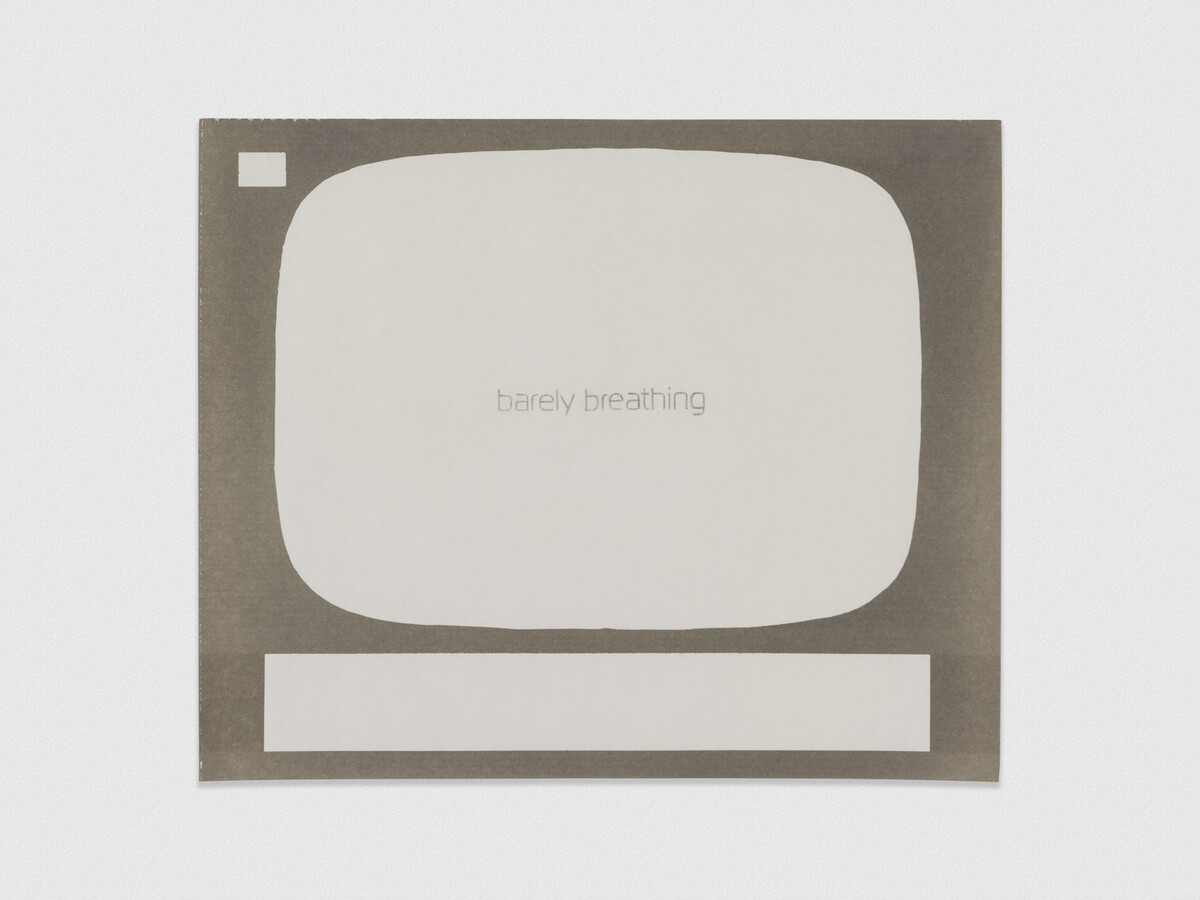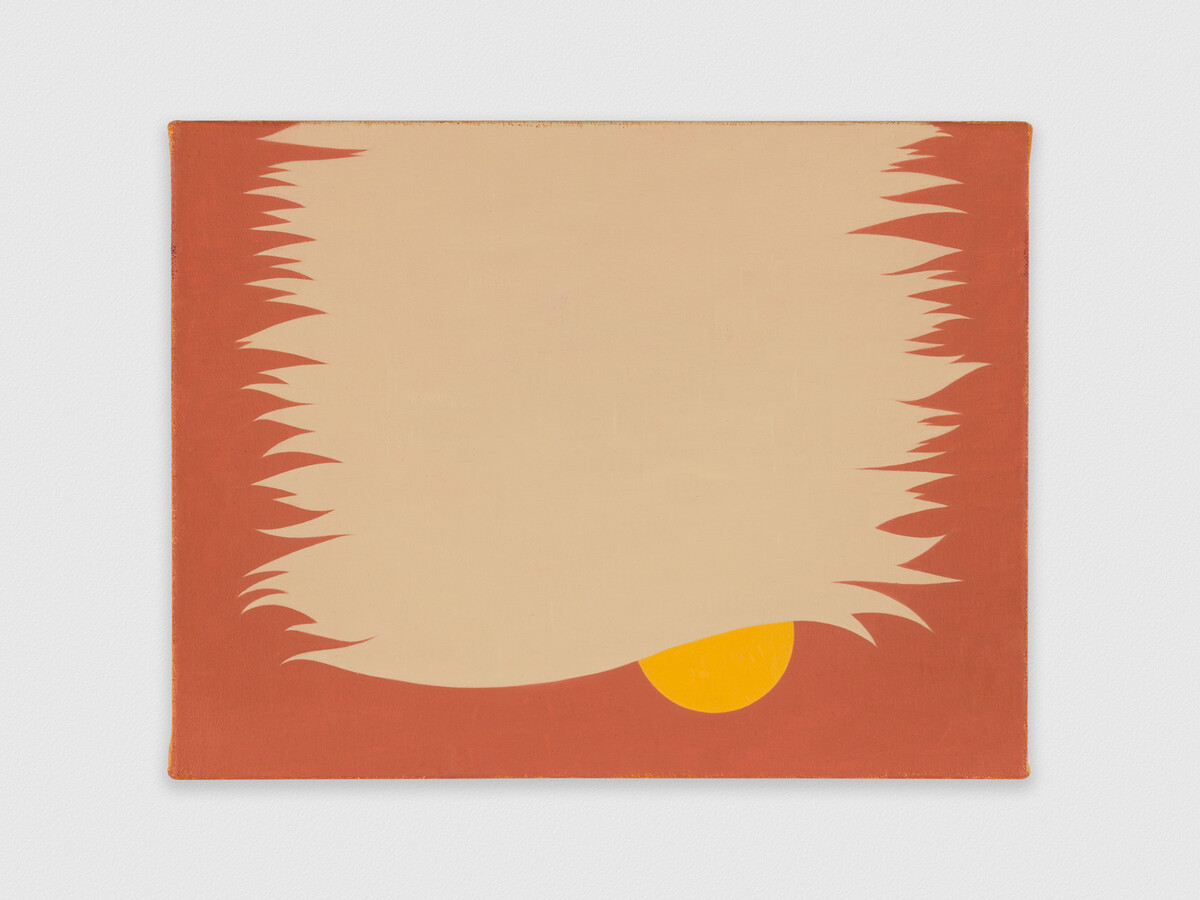
rodolphe janssen is pleased to present Zero eroS, the first solo show at rodolphe janssen of Chicago-based artist Alice Tippit, whose work fluctuates between figurative and abstract realms. The exhibition, which takes place from April 19th to May 20th 2023, presents a new series of paintings made in 2022.
*
The paintings and drawings in this exhibition owe much to windows as a metaphor for paintings, television, and other media. While developing my work I consider not only traditional painting precepts of color, shape, scale, figure, and ground, but also poetic conventions such as metaphor, simile, rhyme, and symbolism. My interest in language as a vehicle for communication, a container of meaning, and an agent of misunderstanding leads me to make images that have the clarity of appearance we associate with signs yet are lacking a clear referent. Windows, as transparent passages between public and private space, are rich with a similar ambiguous potential.
The person who glimpses something they should not have through a window is a common cliché in cinema and literature. The ambiguities of perception and the possibility that one has misapprehended what was seen is a persistent feature of this trope, as is sex and/or violence. In the painting Peep, a peach shaft parts a gray shape. Is this a figure backlit in bright warm light or a still life of peach-colored objects against a gray ground? If both answers are correct, is it possible that the meaning of this image lies somewhere beyond the perceptive trick it plays?
There is a tendency to approach a work of art and immediately set about trying to figure out what it is about. But in so doing, we break its spell. I address the persistence of this conundrum directly in another painting, Old Moon, in which the silhouette of a hammer faces a window-like grid. Windows, when they appear in paintings, are typically associated with yearning or possibility. As a tool the hammer operates as a stand-in for the viewer, a humanoid agent within the scene. Our knowledge of the damage a hammer can do to a window provides a sliver of narrative tension, yet with no indication as to whether the hammer is looking out or peering in, it is difficult to draw any conclusion as to its intent. As a depiction of contemplation, it suggests a response in kind.

Other paintings in the exhibition address this very act. Consider the word reflection, which may refer to physical phenomena generated by objects or activities, or to mental activity concerned with engagement in deep thoughts about a subject, often in relation to oneself. Windows provide ample opportunity for both senses, whether through qualities of light that render their surface reflective, or through transparency, allowing internal engagement with the external world. These states are addressed in my paintings by the mirroring of recognizable shapes, as in Dupe and Streak, and by evoking the figure, as Oubliette and Urchin do. In each, the figurative elements are suggestive of parts of bodies, yet they also elicit openings or portals. This dynamic, between substance and void, renders the space between things and our clumsy attempts to describe them, visible.
Elsewhere in the exhibition, four drawings on vintage TV storyboarding paper depict the opening lyrics to Rapture, a song by the band Blondie. In various works by René Magritte that share the title La Clef des Songes, the field of the painting is broken up into compartments featuring an image accompanied by a word, evoking a lesson in a reading primer for children. Famously, the word and image do not match. A subtler element of these paintings are the compartments themselves: each is a windowpane, framed by muntins and sashes that traverse the whole of the painted image. The television was certainly my window in 1981 when the video for Rapture was on heavy rotation on MTV. In these drawings, the physical states communicated are rendered as images by manipulating the spacing and scale, as well as typographic conventions, such as using all capital cases to convey STRONG EMOTION. As in La Clef des Songes, these word images speak to the ways in which language shapes our perception of the world around us. I see all the works in this exhibition as little windows, by which we may consider concepts that are in many ways unthinkable through panes that are simultaneously familiar and strange.
— Alice Tippit
